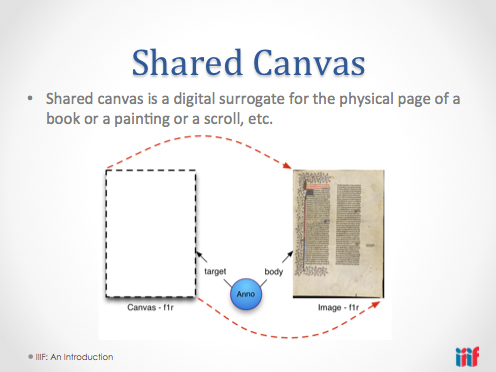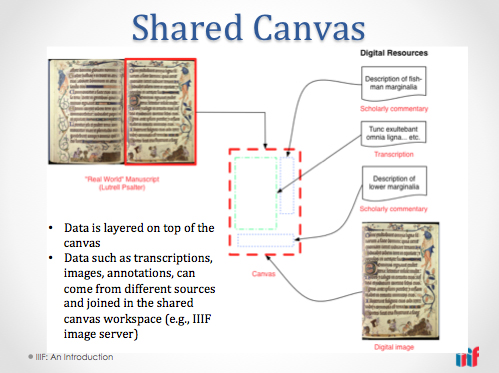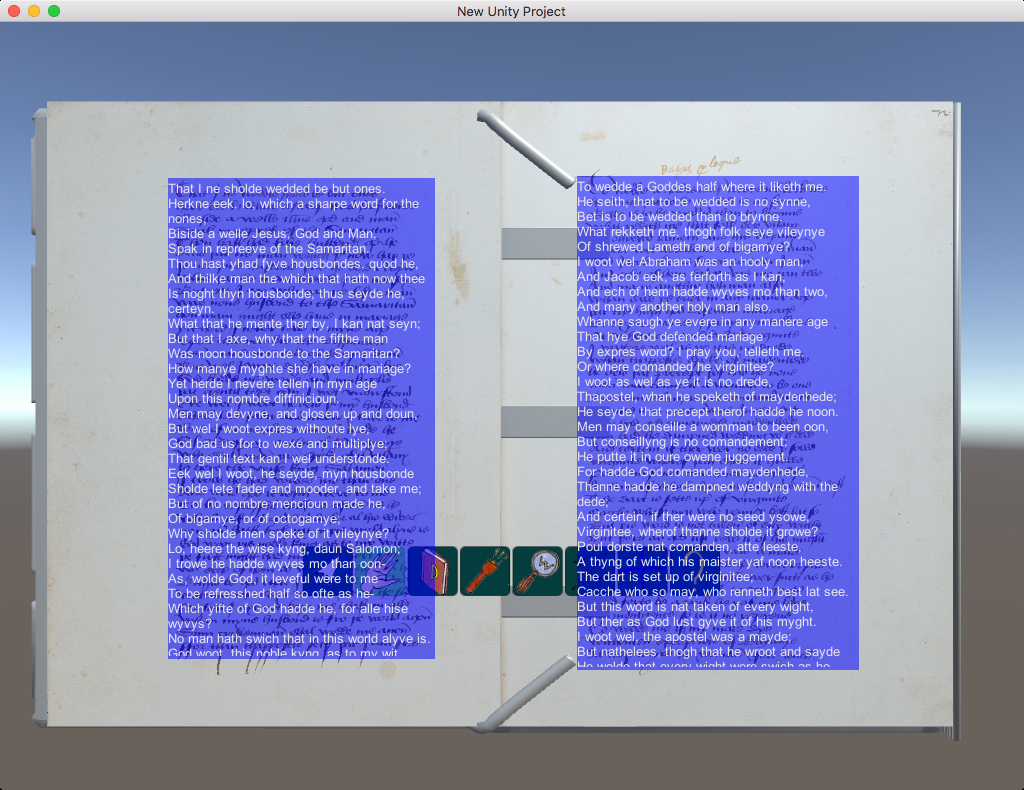The International Image Interoperability Framework (IIIF) is an on-going initiative among the international scholarly community to standardize how online libraries organize and encode digital images, which includes two-dimensional artwork, photographs, and - most importantly for scholars of medieval literature such as ourselves - digitized medieval manuscripts. In addition to providing repositories with a compatibility model for the organization and distribution of images, the IIIF community offers a flexible application programming interface that can be plugged into web pages as well as dedicated image viewing software that allows scholars to create their own unique workspace for analyzing and comparing images stored in repositories around the world.

From a book history perspective, digital manuscript repositories aim to make manuscripts accessible for study while protecting the original artefact. As a consequence, the digital surrogate becomes the product that is widely transmitted, read, and annotated while the original book is left untouched. Similarly, the IIIF API uses a "shared canvas model" by which images and annotation metadata are displayed on separate layers of the same canvas. Unlike the open format of the metadata that allows users to contribute their own annotations to the server, image retrieval operates as a one-way process that sends a copy of the file to the viewer to serve as the base upon which metadata will be arranged. Despite these efforts to segregate the digital surrogate from its accumulated metadata, these digital annotations will still be read in conversation with the glosses etched into the physical artefact, which poses a challenge to the assumed hierarchy between physical and digital text.

However, even the most basic IIIF-compliant viewing programs are created with academics in mind and require some background in codicology or even programming to use all of their features. Rather than forcing casual users to adapt to a foreign and overly technical environment, our project proposes wrapping IIIF technology in an aesthetic that blends old and new: the familiar codex book rendered in an environment whose interface takes its cues from established video game conventions.

Please note that all information and diagrams about the shared canvas model have been drawn from the IIIF web page on the subject, which can be found at iiif.io/model/shared-canvas/1.0/. Please see the official web site for comprehensive details on all things IIIF.